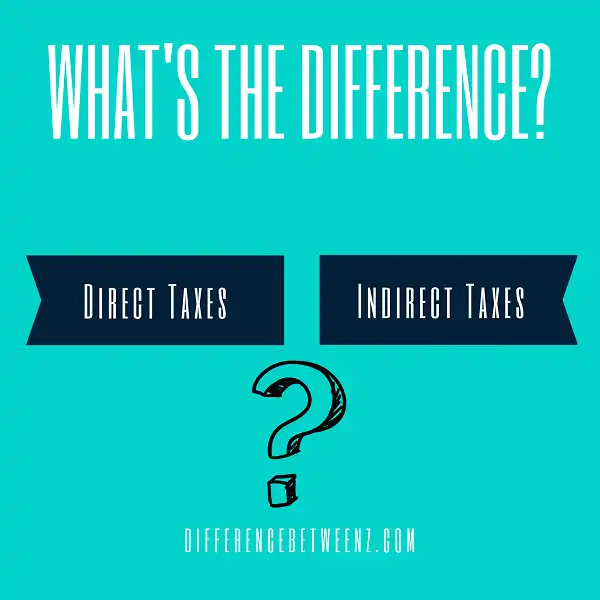What is the difference between direct and indirect taxes? Many people are unsure of the answer to this question. Direct taxes are those that are levied on individuals or specific businesses. Indirect taxes, on the other hand, are generally imposed on goods and services. In most cases, indirect taxes are passed along to consumers in the form of higher prices. Let’s take a closer look at both types of taxation and see how they differ.
What is Direct Taxes?
- Direct taxes refer to the taxes levied on income or wealth. This can include taxes on wages, salaries, dividends, interests, rents, and profits. Direct taxes are typically progressive, meaning that the tax rate increases as the amount of income or wealth increases.
- This type of tax is typically used to fund government programs and services. Direct taxes are considered to be more efficient than indirect taxes because they cannot be passed on to someone else.
- For example, if a worker is taxed on their income, they cannot pass that tax onto their employer. However, direct taxes can be difficult to administer and collect, which can lead to compliance issues.
What is Indirect Taxes?
- Indirect Taxes are those taxes that are not imposed on personal income but are instead levied on the purchase of goods and services. Indirect taxes are generally passed on to the consumer in the form of higher prices, making them regressive in nature.
- Indirect taxes include value-added tax (VAT), sales tax, excise duty, customs duty, and entertainment tax. While indirect taxes are typically imposed by the national government, some subnational governments also levy indirect taxes.
- Indirect taxes are a key source of revenue for many governments around the world. Proponents of indirect taxes argue that they are efficient and promote compliance with the tax system. Critics argue that indirect taxes are regressive and place a disproportionate burden on lower-income households.
Difference between Direct and Indirect Taxes
Direct taxes are levied on an individual or organization based on their income, profits, and assets. The most common direct taxes include income tax, corporate tax, property tax, and inheritance tax.
- Direct taxes are paid directly to the government by the taxpayer. Indirect taxes, on the other hand, are levied on goods and services.
- The most common indirect taxes include value-added tax (VAT), sales tax, excise duty, customs duty, and entertainment tax.
- Indirect taxes are paid by the consumer to the government through the business or service provider. Direct taxes are generally considered to be more equitable than indirect taxes because they are based on the ability to pay.
Indirect taxes, on the other hand, are considered to be less equitable because they are not based on the ability to pay. Direct taxes are also considered to be more efficient because they can be easily administered and enforced. Indirect taxes, however, can be difficult to administer and enforce.
Conclusion
The distinction between direct and indirect taxes is an important one to understand. Direct taxes are those that are levied on specific individuals or entities, while indirect taxes are imposed on goods and services. It’s important to know the difference because it affects how tax revenue is raised and who ultimately pays the tax bill. Thanks for reading!


